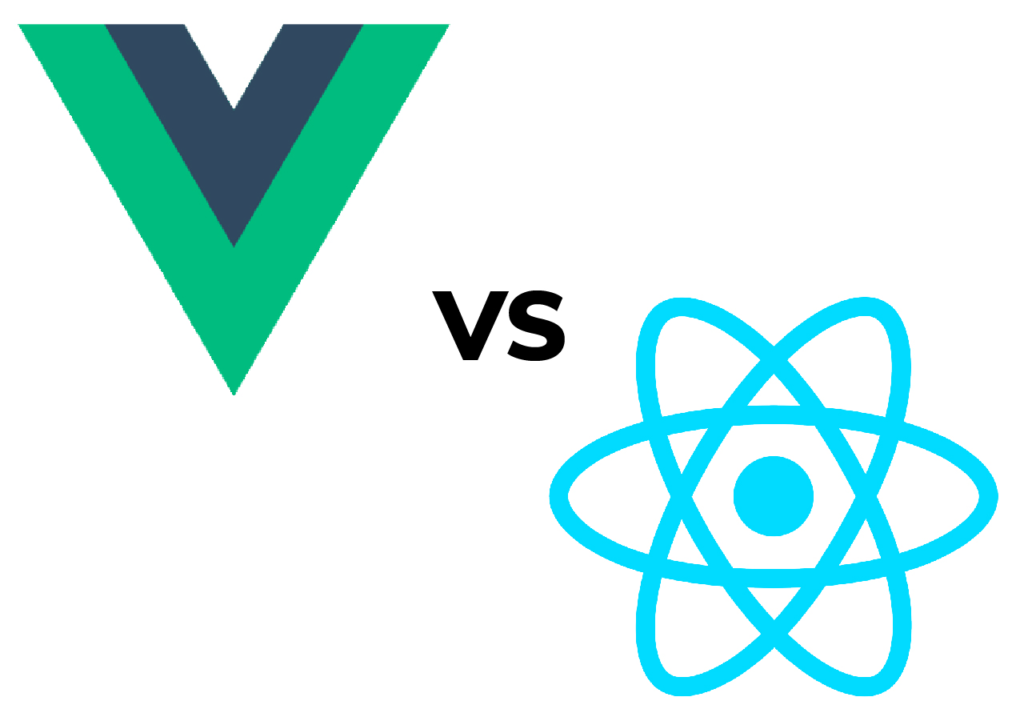Introduction to React and Vue
Background and History of React
React was developed by Facebook in 2013 as a way to build interactive user interfaces with reusable components. It’s widely adopted for its flexibility and ability to manage complex state changes efficiently. React popularized the component-based architecture, enabling developers to build modular and maintainable applications.
Background and History of Vue
Vue, created by Evan You in 2014, was designed to be a progressive framework, meaning you can adopt its features incrementally. It draws inspiration from both React and Angular, combining their best aspects while maintaining simplicity and ease of integration. Vue’s core principle is to offer developers the best of both worlds—a powerful ecosystem with minimal effort in setup.
Key Features of React and Vue
Overview of React’s Core Features
- JSX: React uses JSX, a syntax extension that allows developers to write HTML-like syntax in JavaScript. It makes the UI development process more seamless and intuitive.
- Virtual DOM: React’s Virtual DOM improves performance by updating only parts of the DOM that have changed, rather than re-rendering the entire page.
- Unidirectional Data Flow: React enforces a one-way data binding, making it easier to track how data changes within the application.
Overview of Vue’s Core Features
- Templates: Vue uses an HTML-based template syntax, making it approachable for developers familiar with web development.
- Reactivity: Vue’s reactivity system ensures efficient data updates. It automatically tracks dependencies and re-renders components when the data changes.
- Two-Way Data Binding: Unlike React, Vue supports two-way data binding out of the box, making it easier to handle form input and data updates without extra code.
Performance Comparison: React vs Vue
Speed and Efficiency
React and Vue both offer excellent performance, but they achieve it in different ways. React’s Virtual DOM efficiently updates changes in the UI, while Vue’s reactivity system ensures smooth and optimized data handling.
Optimizing React for Performance
React’s performance can be fine-tuned using techniques like memoization (using React.memo), lazy loading components, and code splitting with React.lazy and Suspense. React’s core strength lies in managing state efficiently even in large applications.
Optimizing Vue for Performance
Vue offers similar performance optimization techniques, like lazy loading and server-side rendering (SSR). Vue’s reactivity system reduces the overhead of re-rendering, making it suitable for performance-sensitive applications.
Learning Curve: Which One is Easier to Learn?
React: A Steeper Learning Curve
React’s learning curve can be steep, particularly because of its reliance on JavaScript ES6+ features, JSX, and the unidirectional data flow model. For developers who are new to these concepts, it might take time to adjust. React also requires familiarity with third-party libraries for tasks like routing and state management.
Vue: A Beginner-Friendly Approach
Vue, on the other hand, is often praised for its beginner-friendly approach. Its integration with standard HTML and CSS makes it easier for developers transitioning from traditional web development. Vue also offers a well-structured and intuitive API, which reduces the learning curve for newcomers.
Community and Ecosystem
React’s Ecosystem
React boasts one of the largest ecosystems in the JavaScript world. With a wide range of libraries and tools, developers can build highly customizable applications. React’s backing by Facebook also gives it a sense of longevity and reliability.
Vue’s Ecosystem
Although smaller than React’s ecosystem, Vue has grown rapidly over the years. Vue’s official tools, like Vue CLI, Vue Router, and Vuex, provide everything needed for building robust applications. Its community is very active, offering a wide range of plugins and support.
State Management
React: Redux and Context API
React does not have a built-in state management solution, but developers often use third-party libraries like Redux or MobX. For simpler applications, React’s Context API is a viable alternative for managing global state.
Vue: Vuex for Centralized State Management
Vuex, Vue’s official state management library, is tightly integrated with Vue, making it easier to manage state across large-scale applications. Vuex follows a predictable state container pattern, similar to Redux, but with a simpler syntax.
Scalability and Large Projects
Scaling React in Complex Applications
React scales well for complex, large-scale applications due to its component-based architecture and strong ecosystem. It allows teams to break down applications into smaller, reusable components, making maintenance and scaling easier.
Scaling Vue in Large-Scale Projects
Vue is also suitable for large-scale applications, particularly because of its modular design and ease of integration with other libraries. Vue’s simplicity does not compromise its scalability, making it a good choice for both small and enterprise-level projects.
Integration with Existing Projects
React’s Flexibility in Legacy Projects
React’s flexibility makes it a great choice for integrating with existing projects, especially in environments where you want to incrementally adopt a new framework without a complete rewrite.
Vue’s Lightweight Integration Capabilities
Vue’s lightweight nature and ease of integration make it perfect for adding interactive elements to existing projects. Its small size and low barrier to entry allow developers to progressively enhance their applications.
Documentation and Support
React’s Extensive Documentation
React offers thorough documentation, but due to its modular nature, you often need to consult third-party documentation for features like routing or state management, which are not included in the core React library.
Vue’s Well-Organized Documentation
Vue’s documentation is often praised for being clear, concise, and beginner-friendly. It covers the entire ecosystem, including Vue Router and Vuex, making it easier for developers to get started without needing to consult multiple sources.
Mobile Development with React and Vue
React Native for Mobile Apps
React Native is a powerful framework for building cross-platform mobile applications using React. It allows developers to reuse much of their React knowledge and codebase for iOS and Android app development.
Vue with NativeScript and Vue Native
Vue has also ventured into mobile development with NativeScript and Vue Native, though these solutions are not as mature or widely adopted as React Native. Vue’s mobile options are still evolving, but they offer potential for smaller projects.
Popular Use Cases of React and Vue
React in Enterprise Applications
React is widely used in enterprise-level applications, thanks to its robustness, scalability, and large community support. Facebook, Instagram, and Airbnb are just a few examples of React-driven platforms.
Vue in Small to Medium-Sized Projects
Vue is often favored for
smaller or medium-sized applications, as it offers a quicker development process and easier setup. Many startups and creative agencies use Vue for building performant and maintainable web applications.
Developer Tools and Debugging
React Developer Tools
React provides a set of developer tools for inspecting component hierarchies, tracking state, and debugging performance issues. These tools integrate seamlessly with popular browsers and make debugging more efficient.
Vue Developer Tools
Vue also offers excellent developer tools, providing insights into component structure, state management, and performance optimization. Vue’s dev tools are often praised for their simplicity and effectiveness.
Popularity and Market Trends
React’s Market Share
React continues to dominate the JavaScript framework market, maintaining a large share of developers and active projects. Its corporate backing and large community contribute to its ongoing growth and stability.
Vue’s Growing Popularity
While Vue does not have the same level of adoption as React, its popularity has been steadily increasing, especially in Asia. Vue’s rise can be attributed to its simplicity, flexibility, and the fact that it’s not tied to a big corporation.
React vs Vue: Pros and Cons
Pros and Cons of React
Pros:
- Large ecosystem and community support
- Excellent performance and scalability
- Strong support for mobile development (React Native)
Cons:
- Steeper learning curve for beginners
- Requires third-party libraries for routing and state management
Pros and Cons of Vue
Pros:
- Easier to learn and integrate
- Lightweight and flexible for small to medium-sized projects
- Offers two-way data binding and reactivity out of the box
Cons:
- Smaller ecosystem compared to React
- Limited support for mobile development (compared to React Native)
Conclusion: Which Framework Should You Choose?
In 2024, the choice between React and Vue largely depends on your project’s size, complexity, and long-term goals. If you’re working on a large-scale, enterprise-level application that requires extensive performance optimization and a large community for support, React is an excellent choice. However, if you’re building a smaller project or need a framework that’s easier to learn and quick to integrate, Vue offers simplicity without sacrificing power.
FAQs
Which is better for SEO: React or Vue?
Both React and Vue can be optimized for SEO using server-side rendering (SSR). React offers Next.js for SSR, while Vue provides Nuxt.js.
Is React or Vue more future-proof?
React’s larger community and corporate backing make it more future-proof, but Vue’s continued growth and versatility ensure it will remain a strong contender.
Can I switch from React to Vue easily?
Switching from React to Vue is possible, but it requires rewriting certain parts of the codebase, as the two frameworks follow different paradigms.
Which framework has better TypeScript support?
React has stronger TypeScript support, though Vue has made significant improvements in this area with Vue 3.
What’s the best framework for large teams?
React is often preferred by large teams due to its modular architecture and strong ecosystem support for complex applications.
Which framework should I use for mobile app development?
React Native is the preferred choice for mobile app development, as it offers robust cross-platform support. Vue’s mobile solutions are still evolving and may not be as mature.


